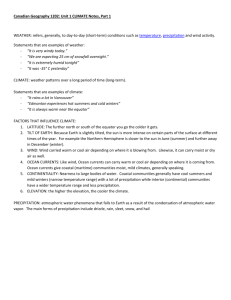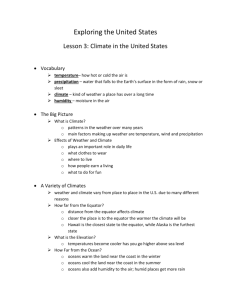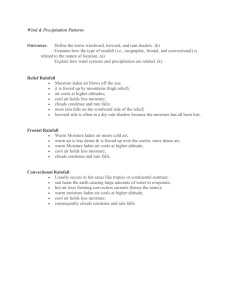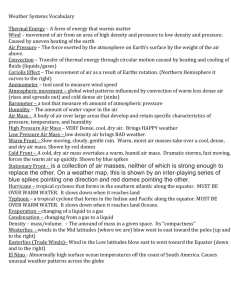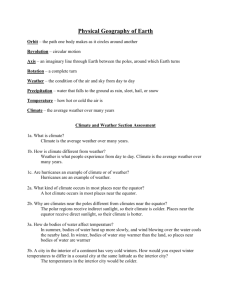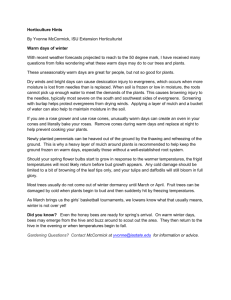03 ICA Climate Exam Answers
advertisement
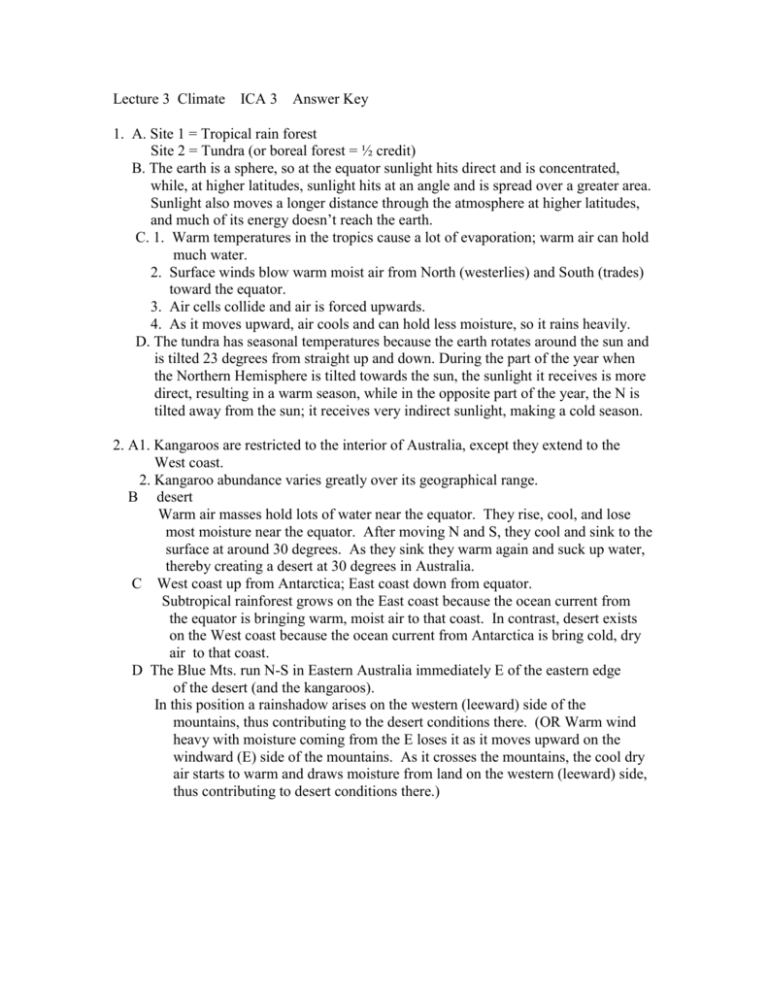
Lecture 3 Climate ICA 3 Answer Key 1. A. Site 1 = Tropical rain forest Site 2 = Tundra (or boreal forest = ½ credit) B. The earth is a sphere, so at the equator sunlight hits direct and is concentrated, while, at higher latitudes, sunlight hits at an angle and is spread over a greater area. Sunlight also moves a longer distance through the atmosphere at higher latitudes, and much of its energy doesn’t reach the earth. C. 1. Warm temperatures in the tropics cause a lot of evaporation; warm air can hold much water. 2. Surface winds blow warm moist air from North (westerlies) and South (trades) toward the equator. 3. Air cells collide and air is forced upwards. 4. As it moves upward, air cools and can hold less moisture, so it rains heavily. D. The tundra has seasonal temperatures because the earth rotates around the sun and is tilted 23 degrees from straight up and down. During the part of the year when the Northern Hemisphere is tilted towards the sun, the sunlight it receives is more direct, resulting in a warm season, while in the opposite part of the year, the N is tilted away from the sun; it receives very indirect sunlight, making a cold season. 2. A1. Kangaroos are restricted to the interior of Australia, except they extend to the West coast. 2. Kangaroo abundance varies greatly over its geographical range. B desert Warm air masses hold lots of water near the equator. They rise, cool, and lose most moisture near the equator. After moving N and S, they cool and sink to the surface at around 30 degrees. As they sink they warm again and suck up water, thereby creating a desert at 30 degrees in Australia. C West coast up from Antarctica; East coast down from equator. Subtropical rainforest grows on the East coast because the ocean current from the equator is bringing warm, moist air to that coast. In contrast, desert exists on the West coast because the ocean current from Antarctica is bring cold, dry air to that coast. D The Blue Mts. run N-S in Eastern Australia immediately E of the eastern edge of the desert (and the kangaroos). In this position a rainshadow arises on the western (leeward) side of the mountains, thus contributing to the desert conditions there. (OR Warm wind heavy with moisture coming from the E loses it as it moves upward on the windward (E) side of the mountains. As it crosses the mountains, the cool dry air starts to warm and draws moisture from land on the western (leeward) side, thus contributing to desert conditions there.) 3. A. Predominant tradewinds are in the Caribbean Sea. B. Caribbean: tropical rain forest Pacific: seasonal deciduous forest The mountains cause a rain shadow with moisture on the windward (Caribbean side) with a rain forest and little moisture on the leeward (Pacific side) with a distinct dry season and a seasonal deciduous forest. C. Months Latitude May-July 23 N Mar + Oct 0 Nov-Jan 23 S D. February. The sun is hitting directly at locations S of the equator, bringing the ITCZ there with much rainfall in February, but it is hitting less directly at 9 N (Panama), causing a dry season in February. 4. A. B. C. D. 23.5 degrees N to 23.5 degrees S South Yes; No 1. Temperature Higher on the south side. 2. Soil moisture Higher on the north side E. cone-bearing trees on North side; sagebrush on the South side Topography affects plant distributions because S-facing slopes get direct sun (high temp and low soil moisture) and N-facing slopes get only indirect sun (low temp and high soil moisture).

